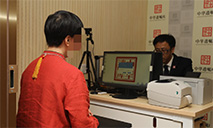Interview: NATO's missed opportunity: How U.S. has failed to incorporate Russia into a Pan-Europe system -- expert
BEIJING, March 27 (Xinhua) -- The relations between Russia and the North Atlantic Treaty Organization (NATO) in the past 30 years have experienced a downward spiral from honeymoon to spat, from detente to bickering, and from new cold war to quasi-hot war, an expert has told Xinhua recently.
The dramatic change in their relations is not just the epitome of the drastic shifts in Russia's identity orientation and foreign policy, but of expanding American clout over former Warsaw Pact countries in the post-Cold War era, said Kang Jie, an associate research fellow at the China Institute of International Studies.
Thirty years ago, a newly independent Russia tried to seek NATO membership, but was met by the George H.W. Bush administration's promise of not one inch eastward of NATO expansion.
Despite no direct engagement, Russia is now in an all but hot war with NATO amid its military conflict with Ukraine, Kang said.
FANTASIES (1991-1993)
Before the collapse of the Soviet Union, then Russian leader Boris Yeltsin once told the United States and NATO that cooperation with the only Western military alliance was an integral part of Russian security, and called NATO membership a "long-term political aim" of Russia.
Russia followed a liberal internationalism after its independence. Then Russian Foreign Minister Andrei Kozyrev wrote in NATO Review, the alliance's official magazine, that "we see NATO nations as our natural friends and in future as allies."
Then U.S. President George H.W. Bush made repeated statements that Russia would be granted entry into NATO as long as it undertook reforms.
CRACKS (1994-1998)
That NATO started eastward enlargement dented Russia's fantasies about the West, Kang noted. From late 1993, the Clinton administration began to push NATO eastward in order to compete with the Republicans, curry favor with the domestic military-industrial complex, and win over Polish and Czech American voters.
The NATO foreign ministers' meeting announced an expansion roadmap without prior consultations with Russia, a move that infuriated Yeltsin.
In 1995, an expert panel appointed by Yeltsin proposed two options for NATO expansion: either NATO should give Russia membership, or NATO should be placed under the authority of an expanded United Nations-led Organization for Security and Cooperation in Europe (OSCE), in which Russia would have the right of veto.
In recent years, the Russian side has repeatedly mentioned that NATO has reneged on its "no eastward expansion commitment." In February 1990, when then U.S. Secretary of State James Baker visited the Soviet Union to negotiate the reunification of Germany, he proposed to then Soviet leader Mikhail Gorbachev that the United States and NATO would guarantee that NATO jurisdiction and military presence would not move an inch to the east after the reunification of Germany.
In Russia's view, "no eastward expansion" certainly includes the Eastern European countries east of then East Germany, so it was equivalent to the U.S. commitment of NATO not expanding eastward. But in the United States' view, this commitment was only aimed at the reunification of Germany, and the issue of eastward enlargement was not on the agenda of all parties at that time, so the commitment does not apply to Eastern Europe.
CRISIS AND HONEYMOON (1999-2005)
The Balkans is the first wrestling arena between Russia and NATO, said the expert. In March 1999, despite repeated warnings from Russia, NATO flagrantly launched full-scale air strikes against Yugoslavia. In April that year, despite Russia's opposition, NATO issued a new strategic concept with emphasis on "out-of-area operations," marking the expansion of NATO's military operations from collective defense to external power projection, he noted.
In response, Russia immediately froze all relations with NATO and launched the biggest military exercise, Zapad-99, since the collapse of the Soviet Union. In October 1999, Russia released a new version of its military doctrine in advance, stressing for the first time that external military invasion was the main threat.
In fact, the Kosovo crisis did not change Russia's pragmatic attitude in cooperating with NATO. In August 1999, then Russian Prime Minister Vladimir Putin said that Russia should and will integrate itself into the civilized world, noting that his country would cooperate with NATO.
The 9/11 attacks in 2001 became an opportunity to warm up the relations between the two sides, said the expert, noting that Putin was the first among major power leaders to call in support of then U.S. President George W. Bush, and after that, the United States and Russia set up a joint working group on counterterrorism.
In December 2004, a NATO-Russia action plan on terrorism was approved by the two sides, and Russia took part in NATO's counter-terrorism Operation Active Endeavour in the Mediterranean.
Meanwhile, then Secretary General of NATO George Robertson and leaders of some NATO member states supported Russia's accession to NATO.
This period is seen as a short honeymoon period between Russia and NATO, said Kang.
Also during this period, he said, three cracks in Russia's relations with the United States and NATO began to emerge.
One is the anti-missile system and strategic stability. In 2002, the United States unilaterally withdrew from the Anti-Ballistic Missile Treaty signed by the United States and the Soviet Union.
The second remains the eastward expansion of NATO. Following admitting Poland, Hungary and the Czech Republic in 1999, NATO started its second round of eastward expansion. In the year of 2004, the Baltic states of Estonia, Latvia and Lithuania joined NATO.
The third crack between Russia and NATO is the so-called "color revolution" in the "post-Soviet space." From 2003 to 2005, the "color revolutions" took place in countries such as Ukraine and Georgia.
CRACK ENLARGEMENT (2006-2013)
After 2006, the deployment of anti-missile system, the eastward expansion of NATO, and the "color revolution," these three cracks not only failed to repair, but continued to expand.
In 2006, the United States formally proposed to deploy anti-missile bases in Eastern Europe, and in January 2007, the United States started negotiations on anti-missile deployment with Poland and the Czech Republic.
One month later, in an address to the Munich Security Conference, Putin fiercely criticized the actions of NATO's eastward expansion and the U.S. deployment of anti-missile systems in Eastern Europe. The speech was seen as a watershed in Russia's relations with the United States and NATO.
After taking office in 2009, then U.S. President Barack Obama proposed to "reset" U.S.-Russia relations, indicating a turn in Russia's relations with the United States and NATO. Since then, Russia and NATO began to working towards improving relations. However, not much progress was made.
At the end of 2009, then Russian President Dmitry Medvedev proposed to set up a new European security architecture to replace organizations including NATO and the OSCE, and end the Cold War once and for all.
Though Russia and NATO resumed military cooperation in the year 2010, the negotiations on the new security architecture between Russia, the United States and the European Union failed to make progress. Meanwhile, the United States and the West continued to instigate "color revolutions" in the Middle East as well as in Russia's close neighbors.
RAPID DETERIORATION (2014-2022)
The Ukrainian crisis that broke out in 2014 became the biggest turning point in relations between Russia and NATO, said the expert, noting that the two sides broke off security cooperation and turned to substantive military confrontation.
NATO began to provide military assistance to Ukraine after the crisis, including sending military advisers and instructors. At the Warsaw Summit in 2016, NATO nations decided to have multinational battalions stationed in the three Baltic states and Poland.
Meanwhile, the dispute between the United States and Russia over the implementation of the Intermediate-Range Nuclear Forces (INF) Treaty has also intensified, as the two sides accused each other of violating the historic arms control deal.
In 2019, the United States officially announced its withdrawal from the INF Treaty.
With Russia and NATO facing full-scale confrontation and the United States encouraging Ukraine to join NATO, Russia proposed three security dialogues with the United States, NATO and the OSCE at the end of last year, all of which were fruitless, Kang said.
On Feb. 24, the Russian army launched a special military operation in Ukraine, which, said Kang, marked the beginning of the largest armed conflict in the region since World War II.
In general, Kang said, the Russian elites hoped to integrate the country into the Western security community more than once, while the United States and NATO chose to turn Moscow down.
Driven by ideology and pushed by the military-industrial complex, Washington turned a blind eye to the repeated opposition from the domestic strategic community and from Russia. It pushed NATO eastward again and again, and instigated "color revolutions" around Russia repeatedly, forcing Russia into the corner, Kang said.
Photos
 Increasingly more young adults in China register wills that include virtual assets
Increasingly more young adults in China register wills that include virtual assets Rapeseed flowers turn NW China's Luoping into picturesque spring wonderland
Rapeseed flowers turn NW China's Luoping into picturesque spring wonderland Why do people in China fall for animated characters like LinaBell and Bing Dwen Dwen?
Why do people in China fall for animated characters like LinaBell and Bing Dwen Dwen? Photo Album: architecture in Beijing merging history and modernity
Photo Album: architecture in Beijing merging history and modernity
Related Stories
- Flu cases rise in U.S.: CDC data
- Biden meets Ukraine's foreign, defense ministers in Poland
- Anticipated aggressive rate hikes by Fed drive up recession concerns
- U.S., NATO should hold dialogue with Russia, rather than start new Cold War: spokesperson
- NATO summit fails to address disagreement, concerns among members amid Ukraine crisis
Copyright © 2022 People's Daily Online. All Rights Reserved.






